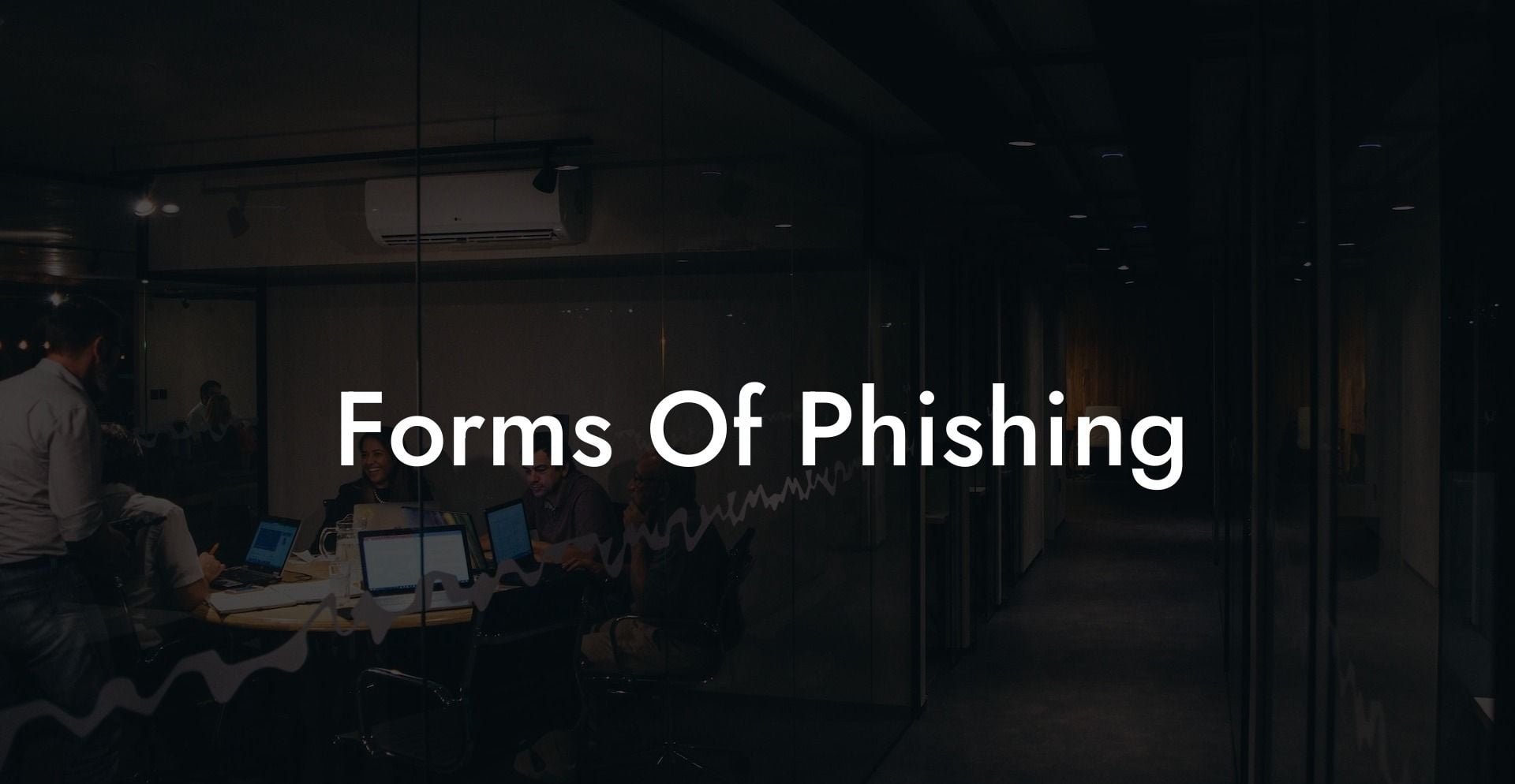In a flux-paced digital world, cyber threats are ever-surging and morphing into more sinister online attacks. The last thing you want is to fall victim to one of the most notorious tactics: phishing. With social engineering at its core, phishing attempts to steal sensitive information by portraying itself as a legitimate source. In this comprehensive guide, we'll discuss various forms of phishing attacks, provide real-world examples, and unveil strategies to safeguard against these insidious practices. So, buckle up and get ready to swim with the sharks as we plunge into the deep end of phishing exploits!
Forms Of Phishing Table of Contents
1. Email Phishing
Email phishing is the most common form of phishing attack. It involves sending seemingly authentic emails from well-known entities (e.g., banks, government agencies, or popular service providers). The email may lure victims into clicking on a malicious link, propagating malware, or divulging sensitive information like login credentials or bank account information.
Protect Your Data Today With a Secure Password Manager. Our Top Password Managers:
Example: A scammer sends you an email impersonating your bank, with a message urging you to update your account information by clicking on a link. However, the link redirects you to a fake website where your personal information is harvested by the attacker.
2. Spear Phishing
Spear phishing is a more targeted approach, focusing on specific individuals within organizations. The attacker gathers pertinent information about the victim from social media profiles or other online resources to personalize the email, making it seem genuine. This method is particularly dangerous as it allows cybercriminals to carry out Business Email Compromise (BEC) attacks or compromise high-ranking officials' accounts within organizations.
Example: An attacker researches company X and identifies its CEO. They craft an email impersonating the CEO, urging the finance department to make an emergency funds transfer to a specific account (controlled by the attacker).
3. SMS Phishing (Smishing)
With the widespread adoption of smartphones, cybercriminals have stepped up their game with SMS phishing or "smishing". This technique involves sending text messages pretending to be from legitimate organizations, urging recipients to visit a website, provide sensitive data, or install malicious apps.
Example: You receive a text message claiming that you've won a prize from a renowned brand. The text directs you to a website to claim your reward, where you're asked to provide personal information in return.
4. Voice Phishing (Vishing)
Vishing leverages voice over Internet Protocol (VoIP) technology to conduct phishing scams via phone calls. Attackers pose as government officials, bank representatives, or tech support personnel to manipulate victims into revealing sensitive information or transferring money.
Example: You get a phone call from someone claiming to be a tax agent, insisting that you owe back taxes and face legal consequences unless you pay immediately via gift cards or a wire transfer.
5. Social Media Phishing
Social media platforms are teeming with phishing attacks, including friend requests or messages from fake accounts, phishing links, or malware-laden apps. These scams exploit human curiosity, trust, and a penchant for sharing content online.
Example: You receive a friend request from an account imitating your friend's profile, or you come across a Facebook page hosting a popular giveaway. Unbeknownst to you, clicking on these malicious links or sharing such content unravels a phishing attack.
Phishing attacks are deceptive by design and ever-evolving. Stay vigilant and take proactive measures to protect yourself from these digital predators. Remember to verify the sender's identity, avoid clicking on suspicious links, and secure your accounts with strong, unique passwords. Knowledge is power! Share this essential guide with your friends, family, and colleagues to raise awareness about the different forms of phishing. While you're at it, explore the wealth of resources available on Voice Phishing to stay one step ahead of cybercriminals!
Protect Your Data Today With a Secure Password Manager. Our Top Password Managers:















